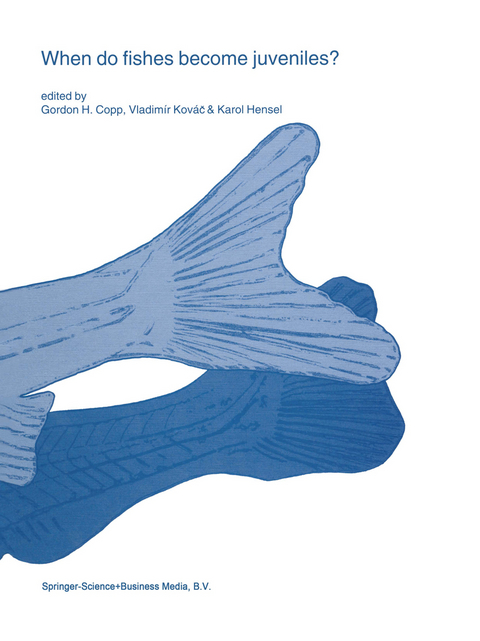
When do fishes become juveniles?
Springer (Verlag)
978-0-7923-5931-9 (ISBN)
Prelude: looking at early development in fishes.- Keynote presentation.- Alternative ways to become a juvenile or a definitive phenotype (and on some persisting linguistic offenses).- 1. Reflections on early ontogeny and metamorphosis.- Features of transition from larva to juvenile in fishes with different types of early ontogeny.- Thyroxine as a mediator of metamorphosis of Atlantic halibut, Hpppoglossus hippoglossus.- Early development of the sofie, Chondrostoma toxostoma.- The reproductive biology and early ontogeny of the mouthbrooding Banggai cardinalfish, Pterapogon kauderni (Perciformes, Apogonidae).- The onset of the juvenile period in carp, Cyprinus carpio: a literature survey.- 2. Organism-environment relationships.- Morphometry of the stone loach, Barbatula barbatula: do mensural characters reflect the Species’ life history thresholds?.- Correspondence between ontogenetic shifts in morphology and habitat use in minnow Phoxinus phoxinus.- Fish, flows and flood plains: links between freshwater fishes and their environment in the Murray-Darling River system, Australia.- Comparison of growth plasticity in the laboratory and field, and implications for the onset of juvenile development in sofie, Chondrostoma toxostoma.- 3. Ontogeny of predator-prey interactions.- A review of predation impact by 0+ fish on zooplankton in fresh and brackish waters of the temperate northern hemisphere.- Seasonal and diel utilisation of inshore microhabitats by larvae and juveniles of Leuciscus cephalus and Leuciscus leuciscus.- Seasonal shifts in day-time resource use of 0+ barbel, Barbus barbus.- Vertical distribution and feeding activity of metamorphosing sole, Solea solea, before immigration to the Bay of Vilaine nursery (northern Bay of Biscay, France).- 4. Behaviour andontogeny.- Ontogeny of aggressive behaviour in schools of yellowtail, Seriola quinqueradiata.- School formation and concurrent developmental changes in carangid fish with reference to dietary conditions.- Ontogeny of diel pattern of stream-margin habitat use by emerging brown trout, Salmo trutta, in experimental channels: influence of food and predator presence.- Size-based variation in somatic energy reserves and parental expenditure by male smallmouth bass, Micropterus dolomieu.- To be a juvenile and not to be a larva: an attempt to synthesize.- Species and subject index.
| Erscheint lt. Verlag | 30.9.1999 |
|---|---|
| Reihe/Serie | Developments in Environmental Biology of Fishes ; 19 |
| Zusatzinfo | VI, 286 p. |
| Verlagsort | Dordrecht |
| Sprache | englisch |
| Maße | 210 x 279 mm |
| Themenwelt | Naturwissenschaften ► Biologie ► Evolution |
| Naturwissenschaften ► Biologie ► Genetik / Molekularbiologie | |
| Naturwissenschaften ► Biologie ► Ökologie / Naturschutz | |
| Naturwissenschaften ► Biologie ► Zoologie | |
| Weitere Fachgebiete ► Land- / Forstwirtschaft / Fischerei | |
| ISBN-10 | 0-7923-5931-3 / 0792359313 |
| ISBN-13 | 978-0-7923-5931-9 / 9780792359319 |
| Zustand | Neuware |
| Haben Sie eine Frage zum Produkt? |
aus dem Bereich


